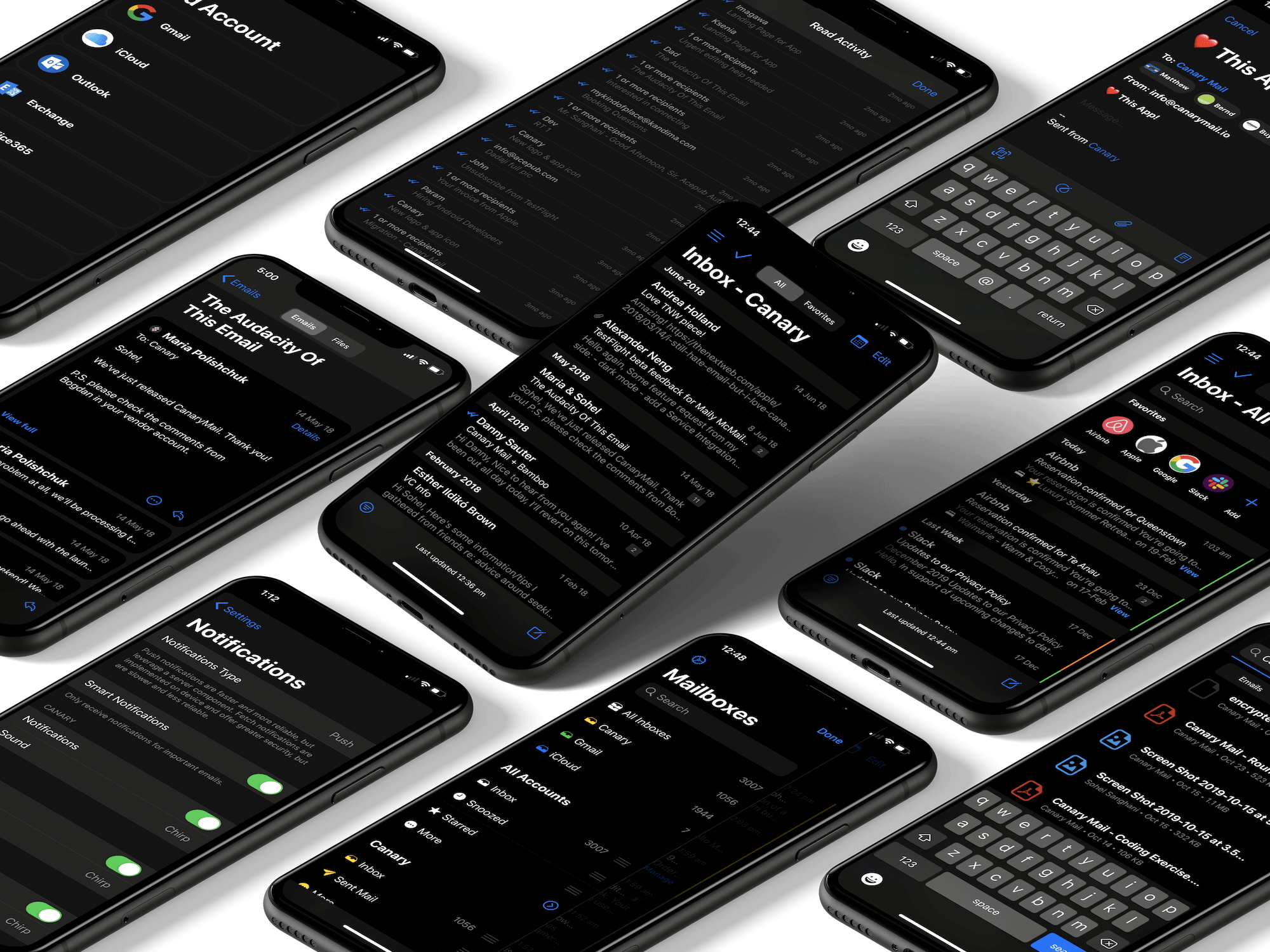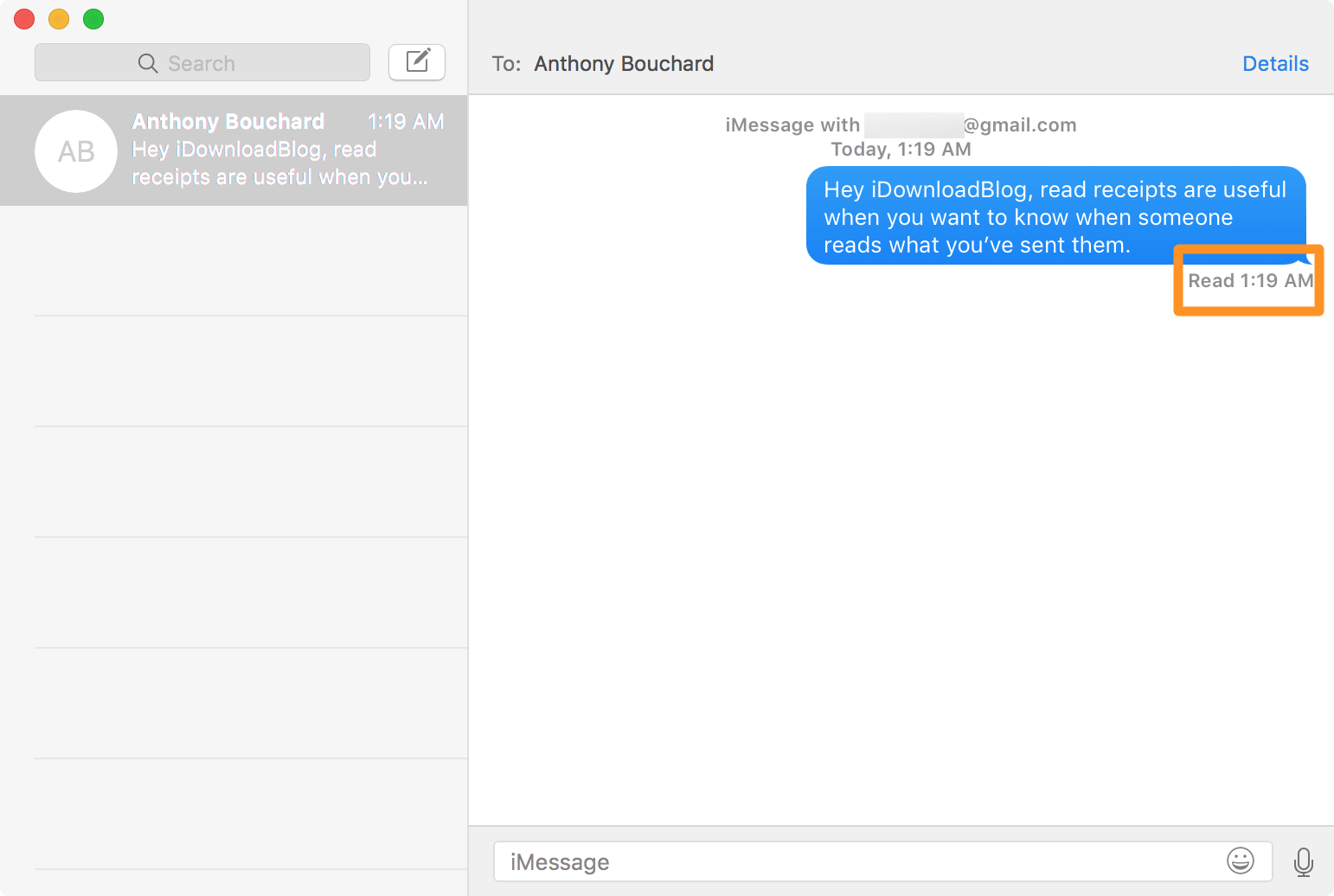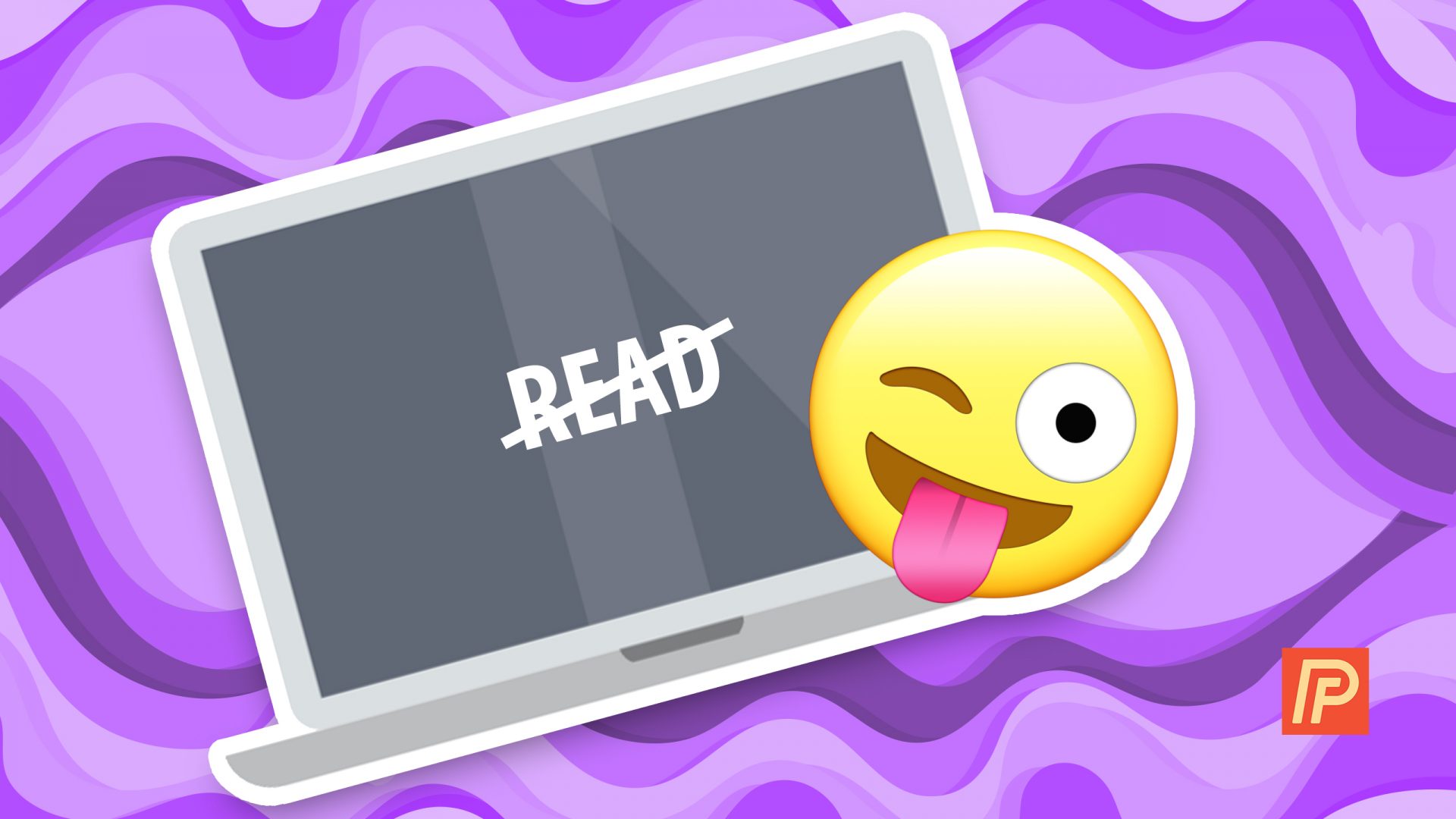To get a read receipt from the apple MAIL app? We dont use it a lot, but when you send an email with contractual things in it, its good to have ANY suggestions? Becauase the thing in that link with the terminal did not work for me. Read receipts and delivery notifications are available in only some versions of Outlook for Mac, and only when using a Microsoft 365 work or school account, or an Exchange Server account managed by your organization. Info: Please note that the recipient can decline to send read receipts. There are other scenarios in which read receipts are not sent, such as when the recipient's email program doesn’t support read receipts.
- Read Receipts In Apple Mail
- Read Receipt Outlook For Mac
- How To Request Read Receipt In Hotmail
- Read Receipts Mail App Mac Free
Mail User Guide
See at a glance who has emailed you, read and respond to emails and conversations, change which messages are shown and how they’re shown, and make them easier to see.
Read and respond to emails
In the Mail app on your Mac, do any of the following:
Reply, forward, or take another action with a message: Move the pointer over the message header, then click one of the buttons that appears. See Reply to, forward, or redirect emails.
Accept events or contacts: Click the Add link to the right of a suggested event or contact.
Unsubscribe from a mailing list: In the banner at the top of a message sent from a mailing list, click Unsubscribe. See Unsubscribe from mailing lists.
Block contacts: Move the pointer over the message header, click the arrow that appears, then choose Block Contact. See Block senders.
Mute conversations: Select a conversation, then click the Mute button in the Mail toolbar (you may need to first click the More Toolbar Items button ). See Mute email conversations.
Open a message in its own window: Double-click the message in the list. If you set the option in General System Preferences to always open documents in a tab, the message may open in a tab.
When you use Mail full screen, messages are shown side-by-side with the message list (or you can have messages slide up from the bottom of the screen).
Move a message to another mailbox: Select a message, click the “Move to” button in the Mail toolbar (you may need to first click the More Toolbar Items button ), then choose a mailbox. See Move or copy emails.
If you receive a pass in an email, you can add the pass to Wallet.
Change which emails are shown
In the Mail app on your Mac, do any of the following:
Filter messages: Click the Filter button at the top of the message list to enable message filters, choose View > Filter, then select or deselect filters. You can also click and hold the Filter button, then choose options from the menu that appears.
Show messages from one mailbox: In the Favorites bar or the Mail sidebar, click the mailbox.
Show messages from several mailboxes: In the Mail sidebar, select multiple mailboxes.
Show messages from a specific email account: Click the arrow next to a mailbox (for example, Inbox) in the sidebar, then select an account (for example, your iCloud account).
Change how emails are shown
In the Mail app on your Mac, do any of the following:
Turn off conversations to ungroup messages: Choose View > Organize by Conversation. Conversations are off if there’s no checkmark next to the command.
Sort messages: Choose View > Sort By, then choose an attribute, such as From or Size, and a sort order.
Show the message preview on the side or bottom of the Mail window: Choose View > Show Side Preview or View > Show Bottom Preview.
Show more details: Choose View, then choose details to show, such as Date and Time or Message Size (a checkmark indicates a detail is shown).
Show messages with dark backgrounds (when using Dark Mode on your Mac): Choose Mail > Preferences, click Viewing, then select “Use dark backgrounds for messages.”
You can switch to a light background while viewing or writing a message. Choose View > Message > Show with Light Background. To see the message with a dark background again, choose View > Message > Show with Dark Background.
Resize the message list: Drag the bar that separates the message list and the message preview to the left or right.
Alternatively, you can use column layout to view messages. See Use column layout.
Make emails easier to see

In the Mail app on your Mac, do any of the following:
Make text larger by pressing Command-Plus Sign (+) until the text is large enough for you to see. To make it smaller, press Command-hyphen (-).
Customize the Mail toolbar to add buttons for quickly changing the text size.
Change the font used to view and write messages.
You can change how often Mail gets messages for you in the General pane of Mail preferences.
Do prospects you target with a well-written cold email ever see it? Nobody knows. Uncertainty is a constant in sales emails… Except it shouldn’t be this way. Enter Gmail read receipts.
Gmail read receipts are the only way to know whether prospects read your emails. But with a bit of research, it becomes obvious that the default option for Gmail read receipts is quite poor.
So, I looked around. After a bit of research, it became obvious that email tracking extensions are the way to go. I chose five that achieve the perfect implementation of Gmail read receipts — for free.
Without any further adieu, let’s dive in!
What Gmail read receipts should do
In many ways, email feels stuck in the 1990s. Modern messengers (think WhatsApp) offer you a glance-able way to see if your message was seen. Email platforms insist on a dangerous level of ambivalence.
Has a prospect actually seen your message? You never know!
But knowing is what allows you to come up with a better email strategy. Does nobody open your emails? Time to change the subject line. Still nothing? Maybe you didn’t put enough thought into your cold email’s opening sentence.
In these terms, a Gmail read receipt is an essential feature. But when I first looked for a way to add Gmail read receipts, I was a bit dumbfounded. The implementation is basically useless.
Gmail’s default option doesn’t cut it
I bet a lot of people don’t even know that Gmail has a native read receipts feature. I didn’t. So this video came as a complete surprise:
It’s actually possible to have read receipts turned on in Gmail without third-party tools? That’s great! Why isn’t everybody using it?
Turns out, there are more than a couple of reasons why. For starters, you probably can’t use them. To get access to native Gmail read receipts, you have to be on a paid G Suite account. Receipts are turned on manually in the Google Admin console (here’s how), and they don’t work with regular @gmail.com accounts.
Now, don’t go about this just yet. The implementation of native Gmail read receipts renders them useless. Why?
For a Gmail read receipt to work, your prospect has to manually confirm that they read an email. Via an annoying pop-up message. That… isn’t optimal.
My guess? 99% of prospects would ignore the Gmail read receipt pop-up. Confirming that they read a message feels like promising to send a reply. And why would anyone want to promise you anything before they even read your email?
No wonder I have never received an email with Gmail read receipt turned on. And if I did, I’d probably click ‘Not now’.
Thankfully, it’s not the only solution.
Use email tracking extensions for the best Gmail read receipts experience
Email trackers are not some crazy new invention (in fact, we already covered some of the most popular email trackers out there). They’ve been around for years. And they are great!
Read receipts extensions allow me to have a WhatsApp-like experience for Gmail. Having emails augmented with little ✔✔ icons feels great. It feels seamless. Like email should feel. And it helps immensely to understand when you need to follow up.
Here are the five best Gmail read receipt extensions and how they work:

#1 — MailTrack
Available for: Google Chrome, Mozilla Firefox, Opera, Microsoft Edge
Only want to add glance-able read receipts to Gmail? MailTrack is a strong contender for being the best on this list.
It’s an extension for Gmail that is fast, lightweight and available for most modern browsers. Often email tracking is one of the features of a big sales solution (think SalesHandy or Yesware). But MailTrack is simple. It does one thing and does it great: shows Gmail read receipts in the ‘Sent’ folder.
Developers promise that the Gmail read receipts feature will stay ‘free, forever’. A claim which helped MailTrack gain a 4.5-star rating on the Chrome Web Store.
The only caveat? MailTrack adds its own signature into your emails (which you can manually remove). As people can judge your cold emails on the email signature, it’s better to buy a Pro subscription ($59 a year). Besides ease of mind, it comes with click tracking, metrics, and allows MailTrack to work on your phone.
#2 — Gmelius
Available for: Google Chrome, Opera, Safari
Gmelius is one of the oldest and most popular extensions of its kind. As opposed to MailTrack, it comes loaded with features and calls itself a ‘lightweight CRM’.
Read Receipts In Apple Mail
It’s not wrong. Gmelius lets you schedule emails, create email campaigns, delegate messages to members of your team… Even create Kanban boards! And yes, it also tracks your emails for you.
It might be more than you need if you’re working solo (or already have a sales tech stack that includes some of the other features), but for small teams of sales reps, Gmelius is perfect. Its email tracking feature is fast and reliable. You get unlimited Gmail read receipts for free (again, with a branded signature). Gmelius Premium improves the service with per-recipient tracking, click metrics and more.
#3 — MailTag
Available for: Google Chrome
I love how sleek MailTag’s implementation of Gmail read receipts is. It integrates well into Gmail’s interface and stays out of sight when you don’t need it.
What’s best? MailTag allows you to track several metrics (like clicks and reopens) right in your inbox. Hover over the read receipt, and it will show all the necessary information in the drop-down. MailTag can even highlight how many times your prospect reopens your message.


The only downside is that MailTag doesn’t have any kind of a free subscription. You can take it for a spin for a 14-day trial, and after that, it’s $9 per month. And the subscription includes other great sales-first features, like scheduling emails.
#4 — Free Email Tracker
Available for: Google Chrome
Cloud sync platform CloudHQ hosts more than a dozen productivity-focused Chrome extensions. One of them is an inconspicuously-named Free Email Tracker.
I’m happy to report that the name doesn’t lie. Free Email Tracker does track emails. For free!
It’s simplistic and convenient. But it does pack a few extra features under the hood. For example, Free Email Tracker supports SMS notifications for Gmail read receipts. Turn them on for your most important cold emails — and you won’t miss an opportunity even if you’re not in front of your PC. That’s something I didn’t find in similar extensions for Gmail read receipts.
Read Receipt Outlook For Mac
By default, Free Email Tracker adds a branded signature to your emails. You can manually remove it — or pay a $5 monthly fee to support the developers, and your signature will remain unchanged. I wasn’t able to find any other restrictions for this extension.
#5 — BananaTag
The previous extensions we mentioned in the article are all great at adding read receipts… But only for Gmail. What about Outlook?
I found BananaTag to be a good alternative if you’re working with Microsoft’s email app. Its email tracking feature is as reliable and insightful as any we mentioned above.
The approach to read receipts, however, is less sleek. No more WhatsApp-like ‘ticks’. BananaTag sends you an email each time a prospect reads your message. Informative, but a bit obtrusive.

But if you’re using Outlook, there aren’t many options out there. BananaTag integrates well into the interface. For $10 a month, it lets you track up to 100 emails per day. Additional metrics, attachment tracking, and scheduling are also included.
There is also a free plan, limited to 5 tracked emails per day. It should be just enough to see if BananaTag’s worth it for you.
Don’t want to be tracked?
Gmail read receipts is a great feature and something that I’d love to see implemented by default. But sometimes, you might not want to be tracked yourself.
How To Request Read Receipt In Hotmail
For example, if you’re out of office and want to read incoming messages, but not reply to them before the leave is over. Why send mixed signals to potential partners?
Read Receipts Mail App Mac Free
PixelBlock is an extension for Google Chrome that blocks all email tracking attempts. It also shows you the tracking source. It does what it does, and does it well.
It’s a good moment to remind you that prospects can use extensions like PixelBlock. So while relying on Gmail read receipts is useful, don’t rely on them too much.
Conclusions
Gmail read receipts are a great tool for salespeople. They allow you to get rid of the uncertainty that comes with cold emails. Choose the right extension, and you’re good to go. Just make sure to set your expectations right.
(Oh, and if you’re in the mood for even more Google Chrome extensions for salespeople, we have just the article for you.)
Now — do you have a favorite way to get Gmail read receipts? Do you use them at all? Share your thoughts below!